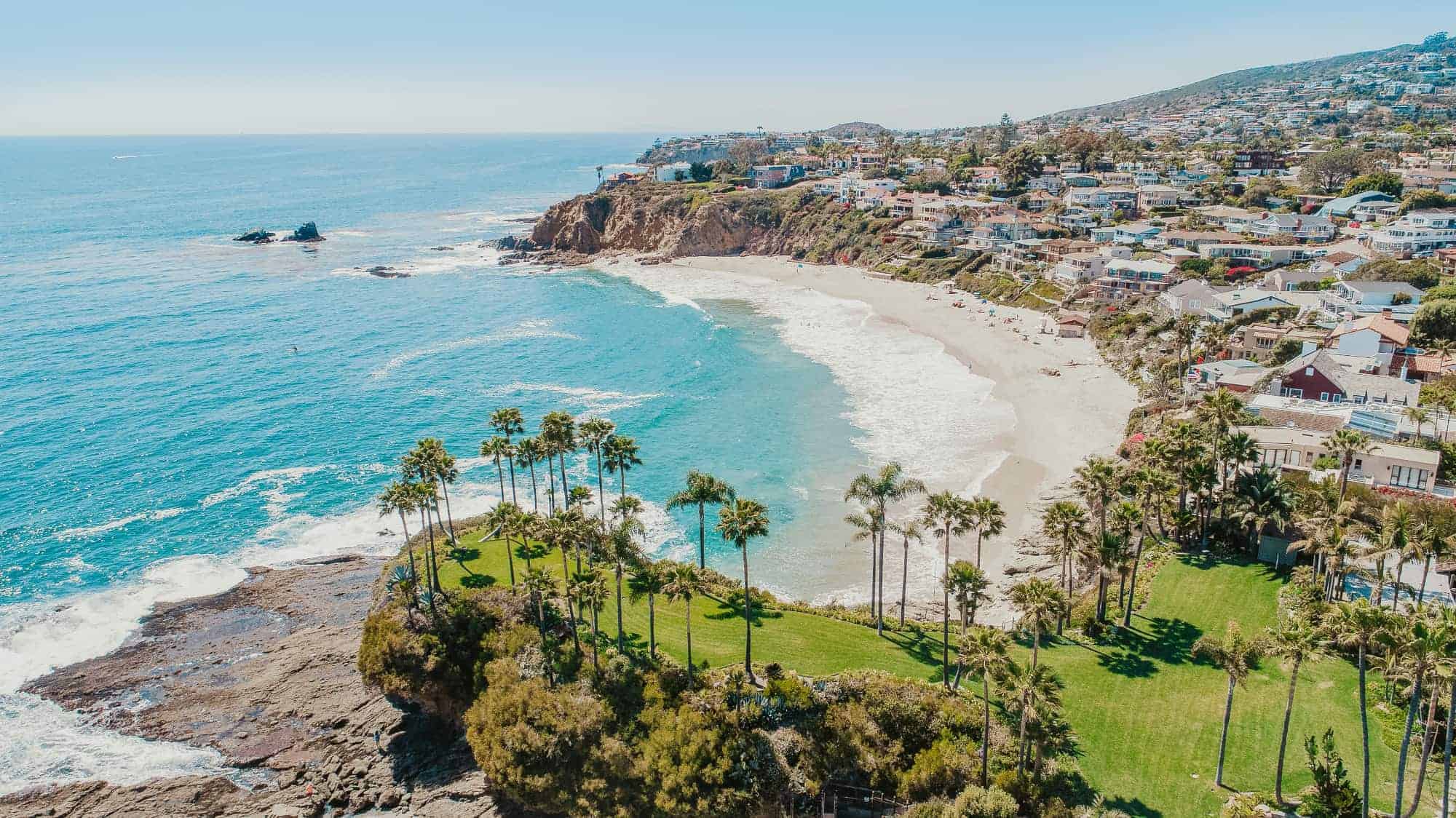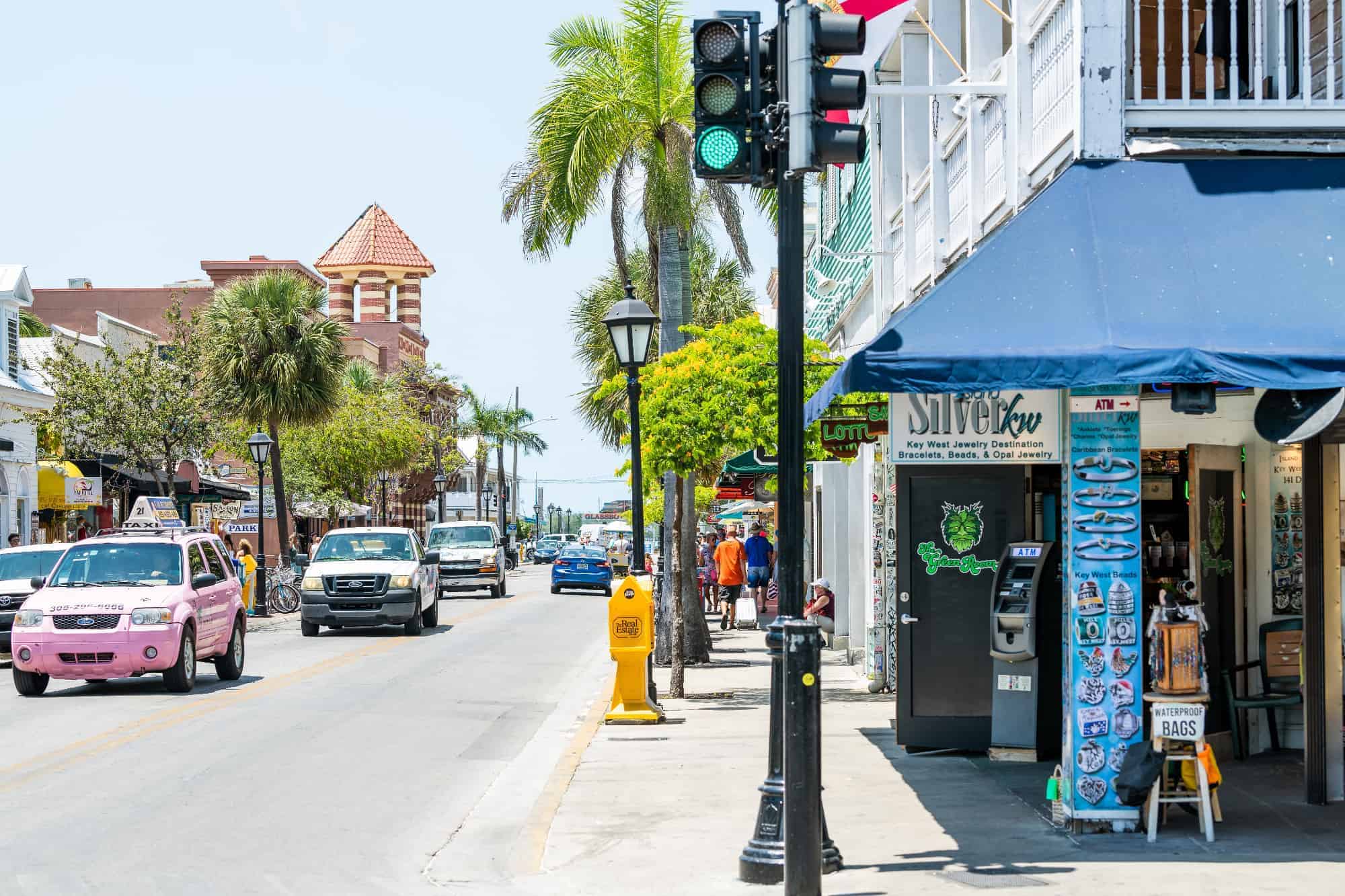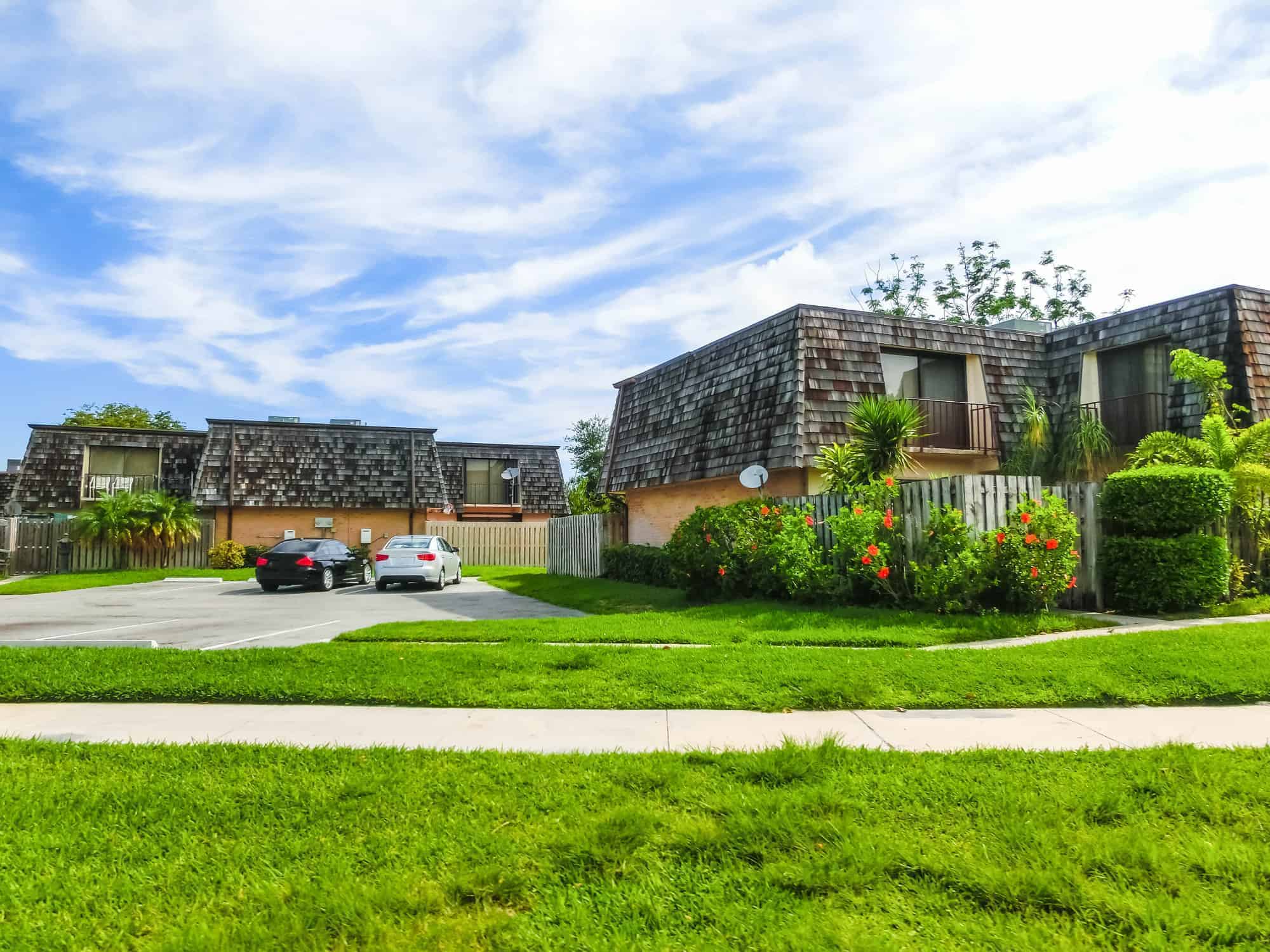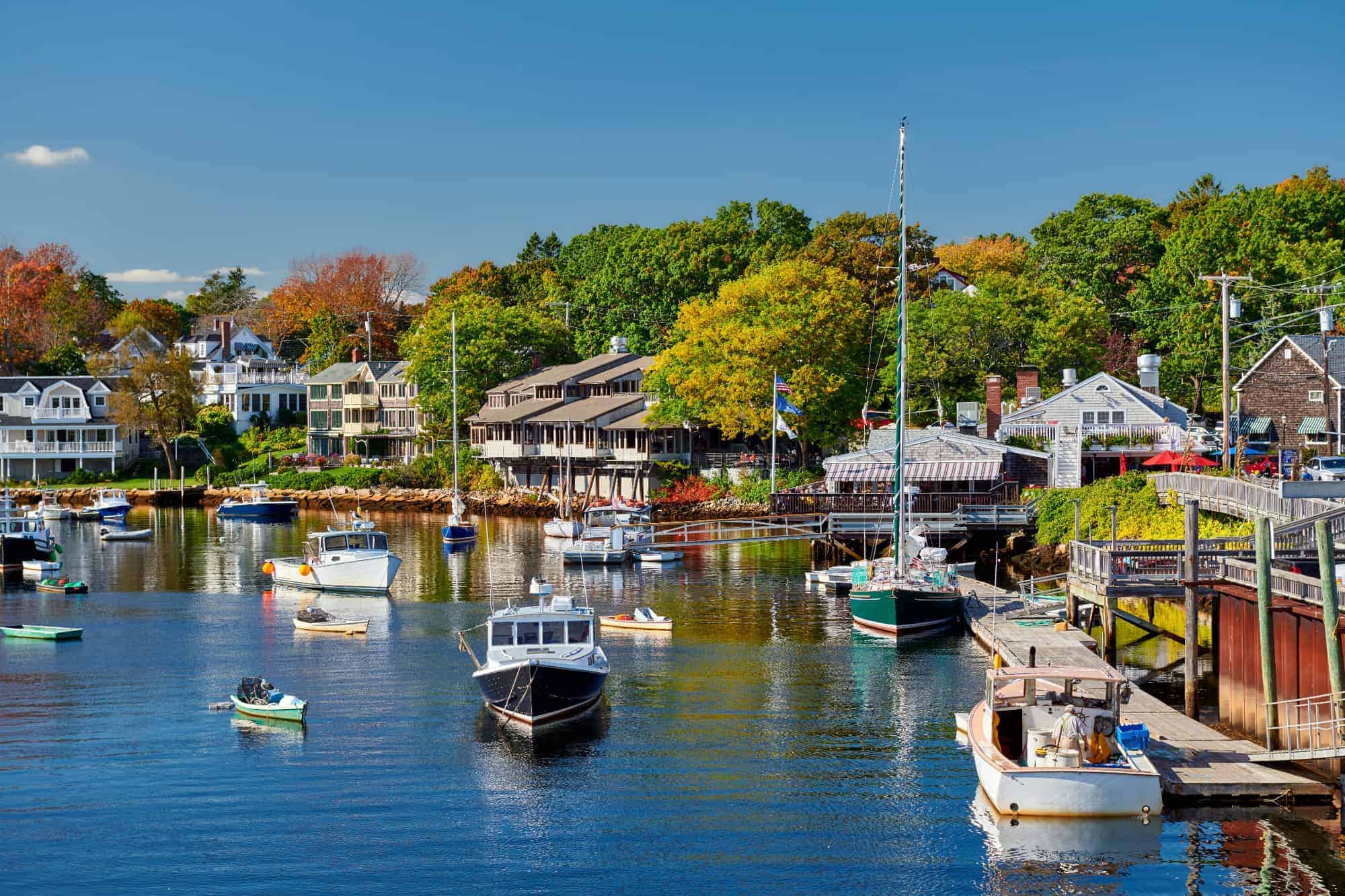Living in the USA can be an extremely attractive idea: this is a country that can offer stunningly beautiful beaches, cutting-edge modern cities, a sophisticated lifestyle, all the activities and entertainment one can only dream of, no language barrier, and a very familiar cultural background you come from an Englsh-speaking country.
This guide offers detailed information on how to make this move happen.
Secure Peace of Mind with Best-Value International Health Coverage
International Citizens Insurance provide free, no-obligation quotes from the leading international health insurance providers with plans tailored to meet your needs. Trusted by thousands of expats worldwide.
USA highlights
The USA can be a good place to live, provided you have an adequate income for your chosen location.

Natural diversity: The country is very diverse, and people are welcoming. There are many unique natural beauty areas, wide-open spaces, and different climates to explore, from the year-round sunshine of California to desert plains and tropical regions.
You can choose your destination according to your climate preferences:
| Climatic Zone | States | Climate | Weather |
|---|---|---|---|
| Arctic | Alaska | Cold, long winters; cool, short summers | Freezing temperatures, snow, and ice for most of the year |
| Mediterranean | California, Oregon, Washington | Mild, wet winters; warm, dry summers | Moderate temperatures with rainfall in winter; warm and dry conditions in summer |
| Desert | Arizona, Nevada, New Mexico, Utah | Hot and dry summers; mild winters | Extremely hot temperatures in summer; mild winters with little precipitation |
| Humid Continental | Illinois, New York, Ohio, Pennsylvania | Cold winters; hot and humid summers | Cold temperatures with snowfall in winter; hot and humid conditions in summer |
| Humid Subtropical | Florida, Georgia, Louisiana, Texas | Hot and humid summers; mild winters | High temperatures and humidity in summer; mild temperatures in winter |
| Tropical | Hawaii, Puerto Rico | Warm temperatures year-round; wet and dry seasons | High temperatures with heavy rainfall during the wet season; warm and dry conditions during the dry season |
| Mountainous | Colorado, Montana, Wyoming | Varies with elevation; generally cooler and wetter | Cooler temperatures and higher precipitation at higher elevations |
Space: Due to the size of the country, Americans have more than twice the average living space of Europeans.
It means that land prices and property prices are generally more affordable. There are, of course, exceptions: living in Washington, DC, doesn't come cheap, and places like New York City, San Francisco, and some other locations have eye-watering price labels.
Some wonderful retirement destinations: Some states provide an excellent environment for retirement. Florida can be pretty affordable, especially considering it doesn't have an income tax. This is why Florida is one of the best retirement places in the USA. You can find more information about the Sunshine State in our guide on the Best Places To Live In Florida.
Great career opportunities: The USA offers a diverse and dynamic job market, with opportunities in various industries. The country also has world-renowned universities and research institutions.
Good infrastructure and facilities: Urban centers and bigger towns are usually well-developed, with good infrastructure, travel links, internet, and mobile connection.
Things to bear in mind
- Healthcare can be expensive, and the system is complex.
- The cost of living varies widely, with major cities often being costly.
- Immigration processes can be lengthy and intricate.
- Access to affordable education, particularly higher education, can be a challenge.
Visas and residency options when moving to the USA
To reside legally in the USA, you need a green card.
You can obtain it by getting employed by a US company or being sponsored by your family member who lives legally in the USA.
Here are the options you have when considering moving to the USA:
- Family Sponsorship:
- Immediate relatives of U.S. citizens.
- Family-sponsored preference categories, including spouses and unmarried children of permanent residents.
- Employment-Based Green Cards:
- Priority workers (EB-1 category).
- Professionals with advanced degrees or exceptional abilities (EB-2 category).
- Skilled workers, professionals, and unskilled workers (EB-3 category).
- Investor Visas:
- EB-5 Immigrant Investor Program for those investing in a new commercial enterprise.
- Diversity Visa Lottery:
- The Diversity Visa Lottery program, also known as the green card lottery, provides a limited number of green cards through a random drawing.
- Registry:
- Individuals who have been continuously present in the United States since before January 1, 1972.
- Returning Residents:
- Green card holders who have spent extended periods outside the U.S. can apply as returning residents.
Retiring to the USA
Can foreigners retire to the States? The answer is no and yes.
Although the United States doesn't offer any retirement programs for residency, there are legitimate ways to go about it.
There are no special retirement programs or visas in the USA, and, just like in Australia, unless you have children who are citizens of the US and can sponsor you, the process of moving to and living in the US in retirement can be quite complicated.
Snowbirding is the easiest and most popular option.
Staying on a Tourist Visa or snowbirding
The easiest way is to obtain a plain tourist visa - a B2 Visa - which is usually granted to pensioners for ten years and permits multiple entries. This way, although simple at first sight, has two main limitations: you can’t stay in the States for more than six months in a year, and you can’t apply for a social security number.
Without the latter, such day-to-day things as obtaining a driving license, opening a bank account, getting health insurance, etc., can become complicated, too.
On the plus side, there are some considerable advantages: by not taking up US residency, you are effectively not liable to pay tax in the USA.
So if you are ready to spend winters in Miami (which are gloriously warm and sunny), or California, for example, and enjoy the rest of the year somewhere else, it can work perfectly well for you.
The snowbird lifestyle can be fun and active, getting you the best of Florida's winters and leaving you to spend summers somewhere else. You can still rent or buy a property, and there are ways to solve other issues like your bank account if needed.

Buying a business to move to the USA
Another way is buying a small business in the States and creating jobs for locals. The necessary investment should qualify as ‘substantial'. There's no definition or threshold. A substantial amount of capital can vary depending on the type of enterprise being invested in. Still, it needs to be enough for the investor to be able to develop a successful business.
It will enable you to apply for an E2 type Visa, which allows you to stay in the country as long as your business runs successfully and comes with the right to obtain a social security number. As long as the E2 business continues in the US, you can continue to extend your visa indefinitely.
Investor's Visa
You have the option to invest a minimum of $1,800,000 or $900,000 in a high-unemployment or rural area, considered a targeted employment area, in order to apply for an E5 Investment Visa.
The program is officially known as the Immigrant Investor Programme.
Under this program, entrepreneurs (and their spouses and unmarried children under 21) are eligible to apply for a green card (permanent residence) if they make the necessary investment of at least $900,000 in a commercial enterprise in the United States, and plan to create or preserve ten permanent full-time jobs for qualified US workers.
You can make your investment either directly in a new or existing business, providing it will create new jobs, or through a 3rd party-managed investment vehicle (private or public), which assumes the responsibility of creating the requisite jobs.
Regional Centres may charge an administration fee for managing your investment.
The pros and cons of a US Investor's Visa
In theory, under this program, you can obtain permanent US residency, and when the project you have invested in is completed and sold, you should get your money back plus a bit of interest.
But in reality, there is always a risk of losing money. So, you need to be extremely cautious and do thorough research concerning any project or FDRC available for investments when choosing the E5 to obtain residency.
The E5 can have its advantages, though.
First, you are not required to start a business or create employment directly; choosing a third-party investment vehicle and investing through it is enough.
Secondly, there are no additional requirements for your spouse or partner.
Thirdly, it is often the only permanent residence option for retirees.
The cost of living in the USA
The USA is one of the most expensive countries in the world to live in, mainly because cities such as New York, Los Angeles, and San Francisco distort the overall figures.
According to the World Population Review, the median price of a single-family home is $273,992. The annual household expenses are $61,334. This includes the following:
- Housing and housing-related costs are 34.9% of spending.
- Average rent for a two-bedroom apartment: $1,154 per month
- Transportation expenses are 16% of spending: $9,826 annually.
- Annual healthcare costs: $5,177
- Food costs, including groceries and dining out: $7,317 per year or $609.75 per month
- Average monthly utility cost: $370.16
The cost of living and the price of real estate vary depending on the location. Here's an example of the average real estate prices and the cost of living in various states:
| State | Average Real Estate Price ($) | Cost of Living Including Rent ($) |
|---|---|---|
| California | $750,000 | $3,500 |
| New York | $455,000 | $3,200 |
| Texas | $300,000 | $2,700 |
| Florida | $392,000 | $2,500 |
| Arizona | $424,000 | $2,300 |
| North Carolina | $321,500 | $2,200 |
| Colorado | $536,000 | $2,800 |
| Georgia | $320,000 | $2,400 |
| Washington | $572,000 | $3,000 |
| Louisiana | $200,000 | $2,100 |
| Massachusetts | $591,000 | $3,100 |
| Illinois | $253,000 | $2,600 |
| Oregon | $490,000 | $2,900 |
| Virginia | $374,000 | $2,750 |
| Nevada | $419,000 | $2,800 |
Real estate prices data source: Zillow.com. The cost of living data source: Numbeo.
How much money do I need to live comfortably in the USA?
On average, with a $80,000 annual income, you can live pretty comfortably in the States, although this number highly depends on your chosen location.

In some areas of the US, $100,000 per year won’t be enough, while in Florida, for example, $80,000 -$85,000 a year can provide a decent life for a retired couple.
There are also variations within states. For example, in Florida, $75,000 will be a good income to live in Jacksonville; however, to afford a comfortable life in Boca Raton, you will be looking at $95,000.
Similarly, to live comfortably in Miami requires more income than living in Tampa, for example. In short, it's worth looking at the cost of living in every location separately to understand what level of comfort you can afford there.
This includes housing (an average rent or mortgage) and healthcare expenses. Obviously, it will be cheaper if your home is bought and paid for.
In the expensive areas of California, you would be looking at $220,000 and above to live comfortably. In contrast, in cheaper places like some Central Valley cities, the cost of living is lower and quite comparable to the US average.
Taxes in the USA
Taxation in the USA is a big and complex issue. The best thing you could do is to take advice from a taxation specialist to make sure you are totally compliant no matter what your visa status and sources of income are.
US taxes for residents
The United States has a worldwide taxation system based on citizenship. So, if you are or will become a US citizen, all income earned by you as a US citizen, whether it is in the country or outside, is subject to taxation by the US government.

As a US tax resident, you pay taxes on your worldwide income.
Both the federal government and the state you reside in can tax your income.
The federal income tax has seven tax rates ranging from 10% to 37%. State taxes differ from state to state. In general, state tax rates range from 0% to more than 13%.
California, Hawaii, Oregon, Minnesota, and New Jersey have the highest taxation rates.
Some states don't impose an income tax at all. For example, if you live in Florida, you don’t pay a state personal income tax, an estate tax, or an inheritance tax. However, there are various sales and property taxes, and some are quite high.
US taxes for non-residents
If you are a non-resident, don’t work or get any other income from the USA, or don’t have a business or a trade there, you might be exempt from paying income tax.
However, if you are engaged in business activities or any form of employment for US tax purposes, non-residents should file a non-resident return (Form 1040NR or Form 1040NR-EZ).
Studying, teaching, and researching are all considered activities in which the taxpayer is engaged in a trade or business.
US bank interest received by non-residents is not considered a US source of income and is not taxable.
Tax liabilities can be different depending on your personal circumstances. For example, you will need to file your tax return in the USA if, during the time of the year when you are out of the country, you rent out your American property.
Taking professional advice on tax matters is the best way to ensure your peace of mind and absolute compliance with any and all reporting requirements in America and in your home country.
Property taxes
According to FIRPTA (Foreign Investment in Real Property Tax Act of 1980), the US government has the right to withhold income tax when a property is sold, exchanged, gifted, transferred, or liquidated by a foreigner.
If you are wondering whether a foreigner can buy a property in the USA, the answer is yes; you can buy a house in the States no matter where you come from.
You will pay around 10% to the Internal Revenue Service and some more to the State government.
Wills and Inheritance
If there's a double taxation agreement between your home country and the USA, it protects your assets from being taxed twice when inherited by your family.

It is important to make the necessary legal arrangements to cover the inheritance procedure of your assets, including any property that you have in the States.
The State Law binds American courts to follow valid foreign wills, so your assets will be inherited according to your wishes. If you don’t leave a valid will, then the State will apply its inheritance rules, which might differ from those in your country of citizenship.
To make sure your loved ones are not left to battle legalities, seek the advice of a professional who has knowledge of both countries' inheritance laws.
Public transportation
The quality of public transport in the USA varies widely between cities and regions.
Major metropolitan areas, like New York City and San Francisco, have extensive and well-developed public transportation systems. These include subways, buses, trams, and commuter trains.
In contrast, many smaller cities and rural areas have limited or no public transit options.
Public transportation networks primarily connect urban areas and their suburbs. Inter-city connections are typically serviced by long-distance buses, Amtrak trains, and domestic flights.
Fares for public transportation vary by location. In major cities, you can expect to pay for each ride, with costs ranging from a few dollars per trip to around $2.90 for a one-way subway ride in New York City. Some cities offer discounted monthly passes for regular commuters.
Domestic flights
Taking a plane is the most popular way to travel across the country. Major cities like New York, Los Angeles, Chicago, and Atlanta and smaller regional airports offer flights to numerous destinations.
Short-haul flights can be relatively affordable, with prices starting from around $120.
Do I need a car?
Expats living in urban areas with good public transport may find it feasible to rely on buses, trains, and subways for daily commuting, but this can be more challenging in suburban or rural regions.
Car ownership often remains a practical choice for convenience and accessibility in many parts of the USA.
Banking and bank accounts in the USA
When opening a bank account, it is advisable to go with one of the bigger American banks such as Bank of America, Citigroup, JPMorgan Chase, Wells Fargo, or Goldman Sachs.
The reason for this is that with bigger banks, it is easier and cheaper to cash cheques and use ATMs all over the country. If you use a small local bank, you might get an unpleasant surprise in the form of high charges for using an ATM when you are out of state.
Opening a bank account in the USA
If you wish to open an account when you are in the US, essential requirements will be your ID, proof of address, and proof of residency. But do call the bank in advance to find out what else they will need to assist you in opening an account.
US healthcare and your options
There is no nationally organized and maintained healthcare system as such in the States. Healthcare in the USA is only 48% publicly funded, and in general, it is provided by private hospitals and clinics.
Most US citizens have medical insurance. Usually, the insurance policies come with an employment package and cover immediate family. There is also a vast number of uninsured residents.
US retirees get healthcare through the Medicare program, which in reality, is federal aid for the poor.
Healthcare options for expats
Unlike many other popular retirement destinations (any European country, for example), the USA does not demand expats take out a health cover. Also, unlike many other countries, the US has no mutual agreement with other countries about healthcare for their citizens.

So, unless you are wise enough to sort your health insurance out before going to the States, should anything happen and you find yourself needing medical assistance, prepare to pay a fortune or be refused treatment.
Only emergency cases are treated without prior payment (but you will still be charged after), and treatment may be refused without evidence of insurance or a deposit. It leaves health insurance as the only viable option to ensure your health is protected.
Health insurance - the best way to look after your health in the US
Taking out private medical insurance is a very wise way to cover your health. It is advisable to shop around and see what international health insurers can offer, especially if you do snowbirding and need cover for just six months of the year.
It will cost a lot, but still less than paying out of pocket if you or your partner has a serious condition or even just a broken bone.
Comprehensive cover vs. budget cover
Comprehensive health insurance covers almost everything. By taking it, you can live relatively stress-free as long as you accept the huge cost of your monthly payments as something inevitable.
Those who can afford comprehensive coverage will have access to some of the best medical technology in the world. Doctors are highly trained, and many of the best specialists can be found in the USA.
Other advantages include short waiting times for operations and specialists, as well as competing medical services.
The budget cover is a bit cheaper but still expensive enough to shock most Europeans.
Budget plans usually cover only in-patient treatment, and most tests are left out.
Doctors in the USA tend to order more tests and scans than the European norm. They will put you on a full course of treatment when a British doctor advises you to take Lemsip.
Tests are often expensive, and with a budget type of cover, you will have to pay for them out of your own pocket.
Hospital treatment and emergencies
Hospitals in the USA are state-of-the-art facilities with the latest equipment and well-trained doctors and staff.
Be prepared to provide proof of your insurance before any treatment is offered to you.
If you need emergency treatment and cannot get to the hospital, you can call 911 for an ambulance. If your insurance doesn’t cover an ambulance, you will be charged a considerable amount.
In an emergency, you will be treated without payment or insurance issues coming first. However, you will still be charged after the treatment.
Pharmacies and prescriptions
It is possible to get almost all prescription medicines at a pharmacy in the USA.
Remember to keep all receipts. Medicines in the States are expensive, and you will wish to claim the costs from your health insurance provider.
The number of prescription medications that can be brought into the country is strictly limited by law. You must have a prescription from a doctor to prove that any medicines being brought into the USA are strictly for personal use.
Check what the limits are and comply with the rules. Otherwise, the drugs will be confiscated at customs.
Health tourism
Due to the prohibitive costs of the US healthcare system, more and more US citizens practice health tourism – traveling to another country for non-emergency treatment.
Nothing can stop you from doing it if you wish to. Moreover, very often, health insurance companies themselves will prefer the treatment abroad to save costs.
This fact has been widely exploited by the countries of Latin America. For them, it’s a lucrative business but also very competitive.
Some of them have become famous as high-quality providers of medical services for US citizens.
For example, healthcare systems in Panama, Costa Rica, and even Cuba are welcoming health tourism. There, it is a booming business.
The industry is highly competitive, so the participating hospitals are very advanced and modern, and the staff is highly trained and speaks English.
Health tourism brings millions into a country's budget and, at the same time, also significantly reduces the costs for American insurance companies and the personal expenses of the patients. Taking into consideration the high quality and relatively low cost of the services, it could be a good option to get your health sorted.
Schools and education
When it comes to education, expats with children have the following options:
- Public schools
- Private schools
- Charter schools
- Homeschooling
Public schools are funded and operated by local, state, and federal government bodies. They are free for students and provide education from kindergarten through 12th grade. Public schools typically follow state-mandated curriculum guidelines and are open to all students within a designated district.
Private schools are independently funded and managed by organizations, religious institutions, or individuals. They charge tuition fees and often have smaller class sizes, specialized programs, and a more flexible curriculum. Admission to private schools is based on various criteria, such as academic performance or religious affiliation.
Charter schools are publicly funded but operate independently, often under a charter granted by a local or state government. Like public schools, they are tuition-free and open to all students. However, they have more autonomy in decision-making regarding curriculum, teaching methods, and school policies. Charter schools aim to provide innovative and alternative educational approaches.
Homeschooling is allowed in the USA. Although homeschooling regulations vary by state, parents or guardians typically create their own curriculum or enroll in homeschooling programs.
How to enroll
When enrolling your child in a public school, you'll need to complete the school district's registration form, which can usually be found on the district's website or obtained by visiting the school office. The required paperwork typically includes:
Proof of residency: You must provide evidence that you reside within the school district. This could include a signed apartment lease, a recent bank statement, or a utility bill displaying your address. This is to confirm your residence in the school's vicinity.
Proof of age: Documentation such as a birth certificate or passport showing your child's date of birth.
Immunization and health records: The most common immunizations you might need to show include:
- Diphtheria and Tetanus toxoid-containing vaccine and Pertussis vaccine (DTaP or Tdap)
- Hepatitis B vaccine.
- Measles, Mumps, and Rubella vaccine (MMR)
- Polio vaccine.
- Varicella (Chickenpox) vaccine.
Your child’s school record and report card: these will help with your child's grade-level placement.
Living in the USA - summary
The USA has so many wonderful destinations where you can enjoy your life to the fullest. If you can overcome visa difficulties and provide for your healthcare, you might well find in the States the perfect lifestyle you are looking for.
You might find useful:
- Best Places To Live In The USA: a detailed overview of the most popular retirement hotspots in the States
- USA Property Guide: Renting Or Buying A House In The USA
- Best Places To Live In Florida
- Living In Miami: What’s It Like & Is It Right For You?
- Didn’t find what you were looking for or need further advice? Comment with your question, and we will do our best to help.
Secure Peace of Mind with Best-Value International Health Coverage
International Citizens Insurance provide free, no-obligation quotes from the leading international health insurance providers with plans tailored to meet your needs. Trusted by thousands of expats worldwide.











